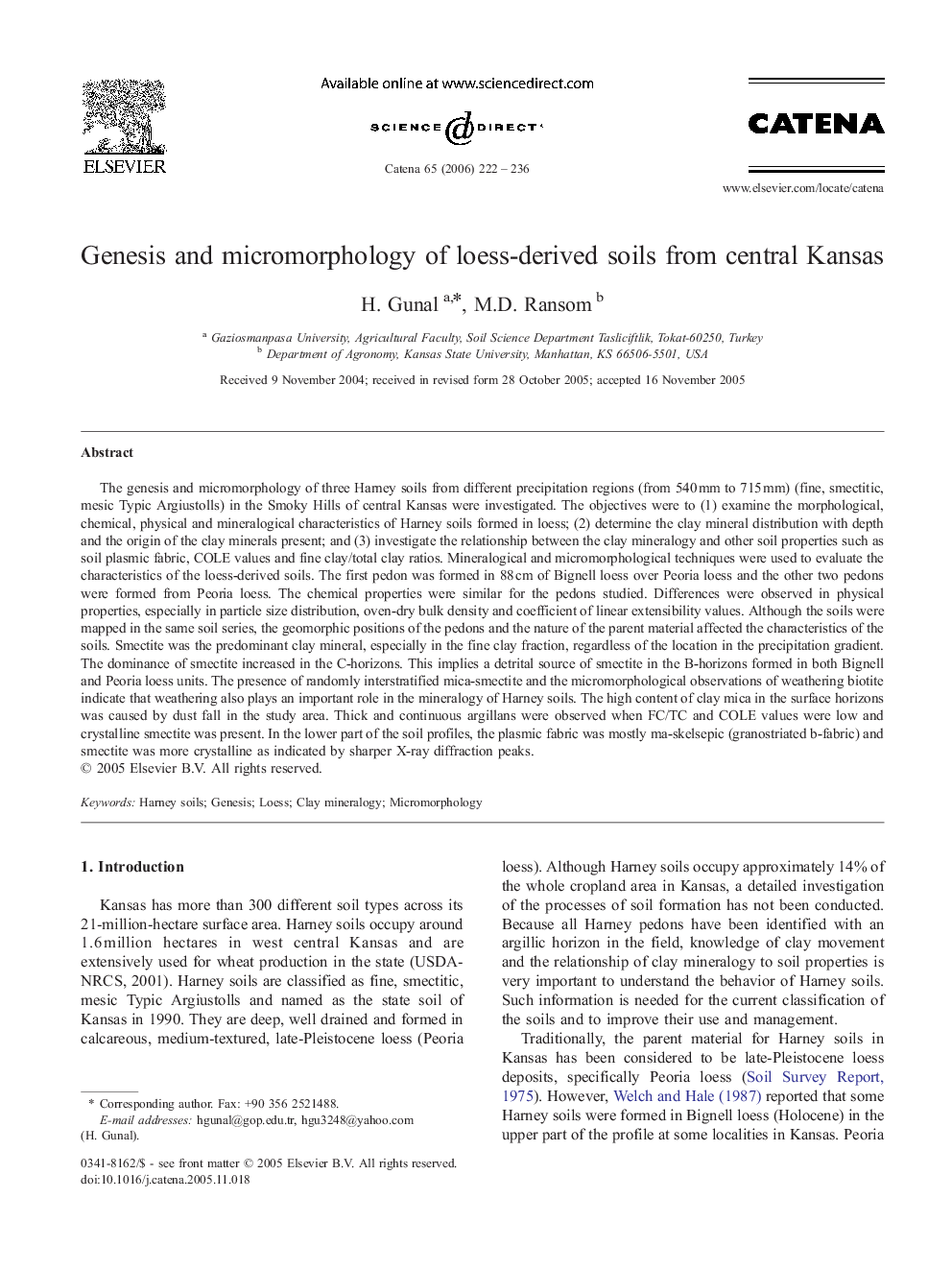| Article ID | Journal | Published Year | Pages | File Type |
|---|---|---|---|---|
| 4572751 | CATENA | 2006 | 15 Pages |
The genesis and micromorphology of three Harney soils from different precipitation regions (from 540 mm to 715 mm) (fine, smectitic, mesic Typic Argiustolls) in the Smoky Hills of central Kansas were investigated. The objectives were to (1) examine the morphological, chemical, physical and mineralogical characteristics of Harney soils formed in loess; (2) determine the clay mineral distribution with depth and the origin of the clay minerals present; and (3) investigate the relationship between the clay mineralogy and other soil properties such as soil plasmic fabric, COLE values and fine clay/total clay ratios. Mineralogical and micromorphological techniques were used to evaluate the characteristics of the loess-derived soils. The first pedon was formed in 88 cm of Bignell loess over Peoria loess and the other two pedons were formed from Peoria loess. The chemical properties were similar for the pedons studied. Differences were observed in physical properties, especially in particle size distribution, oven-dry bulk density and coefficient of linear extensibility values. Although the soils were mapped in the same soil series, the geomorphic positions of the pedons and the nature of the parent material affected the characteristics of the soils. Smectite was the predominant clay mineral, especially in the fine clay fraction, regardless of the location in the precipitation gradient. The dominance of smectite increased in the C-horizons. This implies a detrital source of smectite in the B-horizons formed in both Bignell and Peoria loess units. The presence of randomly interstratified mica-smectite and the micromorphological observations of weathering biotite indicate that weathering also plays an important role in the mineralogy of Harney soils. The high content of clay mica in the surface horizons was caused by dust fall in the study area. Thick and continuous argillans were observed when FC/TC and COLE values were low and crystalline smectite was present. In the lower part of the soil profiles, the plasmic fabric was mostly ma-skelsepic (granostriated b-fabric) and smectite was more crystalline as indicated by sharper X-ray diffraction peaks.
